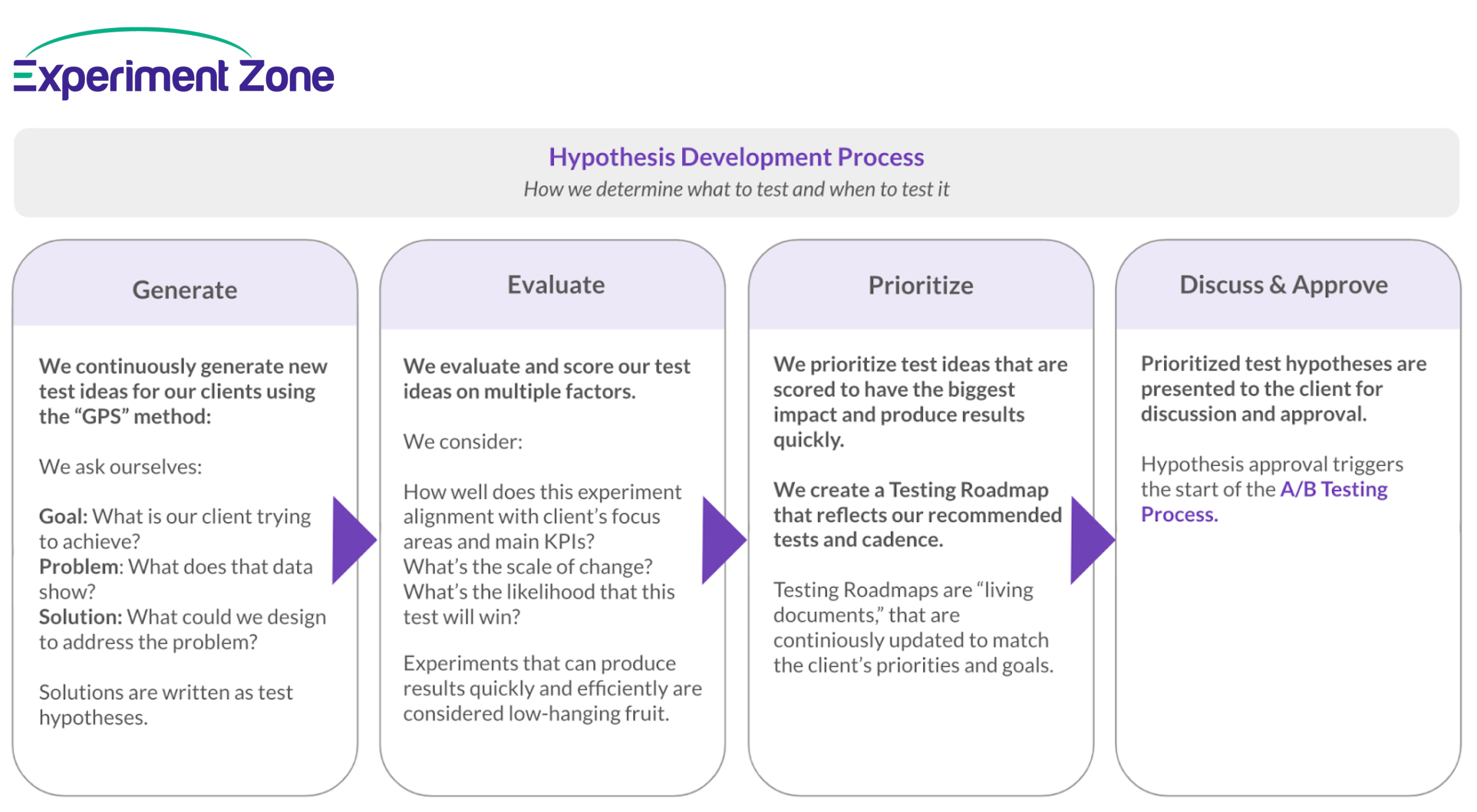
Conversion Rate Optimization (CRO) is a data-driven process of improving the customer experience and journeys so that visitors are more likely to complete the desired action (“convert”).
A conversion is a generic term when a visitor successfully completes a goal on your website.
Depending on your conversion goal, the visitor could sign up for newsletters, download a white paper, or make a purchase.
The conversion rate is the percentage of visitors who completed a desired goal (a conversion) out of the total number of visitors. Here are the average conversion rates standards for some industries:
Conversion Rate = (Total Number of Conversions / Total Number of Unique Visitors) x 100
The average conversion rate for your website is typically influenced by the size and composition of your industry and how competitive it is.
A Conversion Strategy & Testing program is a digital marketing strategy developed for optimizing the conversion rate of your website or app.
CRO programs are all about analyzing your website to find any obstacles in the way of conversion, then tackling and optimizing what needs doing in order to get your visitors turning into customers.
This is achieved through user research, expert site reviews, data analytics, customer journey mapping, A/B testing, and more.
Conducting a site experience audit is a way to uncover the friction points in your digital products i.e. which parts of your website or app are challenging for users and hindering conversions.
You can fast-track your conversion improvements with an expert review of your end-to-end customer journey. We’ll provide a thorough and detailed analysis of the experience and prioritized recommendations for improving the user experience and driving conversion.
Site experience audits are one of the most common types of stand-alone research projects performed by our team of researchers (lead and supporting). Traditionally we use two main methods/ strategies:
We develop high-impact tests based on learnings from research (competitor site reviews, site audits, usability studies, surveys, etc) and data analytics.
Key insights from these studies, as well as the overarching business goals of our clients, help us generate hypotheses for A/B tests. These hypotheses are then evaluated, scored, and prioritized through a thorough process that involves our strategy, design, analytics, and development teams. What results is a high-impact/low-effort prioritized testing roadmap that is presented to our clients for discussion and approval.

At this phase, we validate that the solutions have the intended impact (and learn more about how many visitors respond). We run the highest impact tests, targeting the most significant financial gains and user experience improvements.

Analyze test results to determine visitor friction points and improve customer experience.
Permanently implement the winning test, increasing annual revenue and site experience.
There are plenty of so-called “quick fixes” that can help with your conversion rates or marketing campaigns, but they are only the surface-level, starting place for conversion rate optimization. You need to go layers deeper in order to drive significant growth through CRO.
Our team of CRO experts will do the heavy lifting by helping you understand your customers specifically and how they interact with the site, assess the current site experience, and recommend high-impact tests. Schedule a free discovery call now with our CEO, AJ Davis.